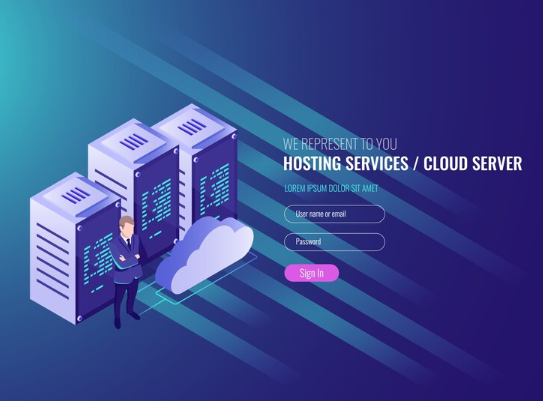Linux Cloud Server Hosting
Linux Cloud Server Hosting refers to the practice of hosting applications, websites, or services on virtualized servers that run on the Linux operating system within a cloud computing environment. This article delves into the nuances of Linux Cloud Server Hosting, exploring why it’s a preferred choice and how to leverage its advantages effectively.
What is Linux Cloud Server Hosting?
Linux Cloud Server Hosting involves deploying virtual servers on a cloud infrastructure using the Linux operating system. It allows users to access computing resources such as CPU, memory, and storage over the internet on a pay-as-you-go basis. This model offers scalability, flexibility, and cost-effectiveness compared to traditional physical server hosting.
Why Choose Linux for Cloud Hosting?
Linux is renowned for its stability, security, and open-source nature, making it an ideal choice for cloud hosting. Its robust architecture enables efficient resource utilization and seamless integration with cloud platforms. Additionally, the extensive community support and a vast repository of software packages contribute to its popularity in the cloud hosting domain.
Advantages of Linux Cloud Server Hosting
Flexibility and Customization
Linux offers unparalleled flexibility and customization options, allowing users to tailor their server environments according to specific requirements. With access to a wide range of software tools and configuration options, users can optimize performance, security, and scalability to suit their needs.
Cost-Effectiveness
Linux Cloud Server Hosting is inherently cost-effective due to the absence of licensing fees associated with proprietary operating systems. Moreover, the efficient use of hardware resources and the ability to scale resources as needed help minimize operational expenses, making it an economical choice for businesses of all sizes.
Security and Stability
Linux boasts robust security features and a proven track record of stability, making it a secure and reliable platform for hosting critical applications and data in the cloud. Its built-in security mechanisms, coupled with regular security updates and patches, help mitigate risks and ensure continuous operation without compromising on performance.
Key Features of Linux Cloud Server Hosting
Scalability
Linux Cloud Server Hosting offers seamless scalability, allowing users to easily scale computing resources up or down based on demand. Whether it’s accommodating sudden spikes in traffic or expanding infrastructure to support business growth, Linux-based cloud servers provide the flexibility to adapt quickly to changing needs.
Resource Management
Efficient resource management is a cornerstone of Linux Cloud Server Hosting, enabling optimized utilization of CPU, memory, storage, and network bandwidth. Advanced resource allocation techniques, such as virtualization and containerization, ensure optimal performance and cost-efficiency across diverse workloads.
Reliability
Linux is renowned for its reliability and uptime, making it a trusted platform for mission-critical applications and services. With features like fault tolerance, high availability, and automated failover mechanisms, Linux Cloud Server Hosting ensures uninterrupted operation and minimal downtime, thus enhancing business continuity and user experience.
Getting Started with Linux Cloud Server Hosting
Choosing the Right Linux Distribution
Selecting the appropriate Linux distribution is crucial for optimizing performance, compatibility, and supportability in a cloud environment. Factors such as community support, package availability, and long-term support (LTS) releases should be considered when choosing a distribution suited to your specific use case.
Selecting a Cloud Hosting Provider
When choosing a cloud hosting provider for Linux-based workloads, factors such as reliability, performance, security, and cost should be carefully evaluated. Look for providers offering robust infrastructure, flexible pricing plans, comprehensive support, and compliance with industry standards and regulations.
Setting Up Your Linux Cloud Server
Setting up a Linux Cloud Server involves provisioning virtual instances, configuring networking, installing necessary software packages, and securing the server environment. Utilize management tools provided by your cloud provider or deploy automation frameworks like Ansible or Puppet to streamline deployment and maintenance tasks.
Optimizing Performance on Linux Cloud Servers
Utilizing Containerization Technologies
Containerization technologies like Docker and Kubernetes offer lightweight, scalable, and portable solutions for deploying and managing applications on Linux Cloud Servers. By containerizing workloads, you can achieve greater resource efficiency, faster deployment cycles, and improved isolation without compromising on performance or security.
Implementing Load Balancing Strategies
Load balancing plays a crucial role in distributing incoming traffic across multiple server instances to ensure optimal resource utilization and high availability. Implement load balancers such as NGINX, HAProxy, or cloud-native load-balancing services to evenly distribute requests and mitigate single points of failure.
Fine-Tuning Server Configuration
Fine-tuning server configuration involves optimizing kernel parameters, network settings, file system options, and application-specific configurations to maximize performance and efficiency. Conduct thorough performance testing and monitoring to identify bottlenecks and adjust configurations accordingly for optimal results.
Security Best Practices for Linux Cloud Hosting
Implementing Firewalls and Intrusion Detection Systems
Deploy firewalls, such as iptables or firewalld, to enforce network security policies and restrict unauthorized access to your Linux Cloud Servers. Additionally, implement intrusion detection and prevention systems (IDS/IPS) like Snort or Suricata to detect and mitigate suspicious activities or security breaches in real-time.
Regularly Updating Software and Patches
Stay vigilant against security vulnerabilities by regularly updating your Linux distribution, system libraries, kernel, and software packages to patch known vulnerabilities and mitigate potential security risks. Automate update management using tools like yum-cron or unattended upgrades to ensure timely and hassle-free updates.
Enforcing Strong Authentication Mechanisms
Enhance security posture by enforcing strong authentication mechanisms such as SSH key-based authentication, multi-factor authentication (MFA), and password policies. Implement centralized user authentication and authorization using Lightweight Directory Access Protocol (LDAP) or Active Directory (AD) integration for centralized management and control.
Monitoring and Management Tools for Linux Cloud Servers
Monitoring Resource Usage with Tools like Nagios or Zabbix
Monitor resource usage, performance metrics, and system health using monitoring tools like Nagios, Zabbix, or Prometheus coupled with Grafana. Set up custom alerts and dashboards to proactively identify and address performance issues, bottlenecks, or capacity constraints in your Linux Cloud environment.
Automating Tasks with Ansible or Puppet
Automate routine tasks, configuration management, and infrastructure provisioning using automation frameworks like Ansible or Puppet. Define infrastructure as code (IaC) using declarative YAML or DSL-based manifests to maintain consistency, repeatability, and scalability across your Linux Cloud infrastructure.
Managing Server Instances with Kubernetes or Docker Swarm
Orchestrate containerized workloads and manage server instances at scale using container orchestration platforms like Kubernetes or Docker Swarm. Leverage features like auto-scaling, service discovery, and rolling updates to streamline deployment, scaling, and management of containerized applications in a Linux Cloud environment.
Advanced Tips and Tricks for Linux Cloud Hosting
Utilizing CDN (Content Delivery Network) Services
Leverage Content Delivery Network (CDN) services to distribute static assets, improve latency, and enhance the performance of web applications hosted on Linux Cloud Servers. Integrate CDN providers like Cloudflare, Akamai, or AWS CloudFront to deliver content efficiently to users across geographically dispersed locations.
Implementing Continuous Integration/Continuous Deployment (CI/CD) Pipelines
Streamline software development, testing, and deployment workflows using Continuous Integration/Continuous Deployment (CI/CD) pipelines. Integrate version control systems, automated testing frameworks, and deployment automation tools like Jenkins or GitLab CI/CD to accelerate the delivery of applications and updates to Linux Cloud environments.
Conclusion
In conclusion, Linux cloud server hosting offers a myriad of benefits, including scalability, reliability, cost-effectiveness, and security, making it an ideal choice for businesses and individuals alike. By leveraging Linux’s open-source nature, stability, flexibility, and robust ecosystem of tools and technologies, users can create, deploy, and manage resilient and high-performance cloud environments tailored to their needs.
With proper setup, management, and security measures in place, Linux cloud servers provide a solid foundation for powering modern applications, websites, and services with confidence and efficiency.






